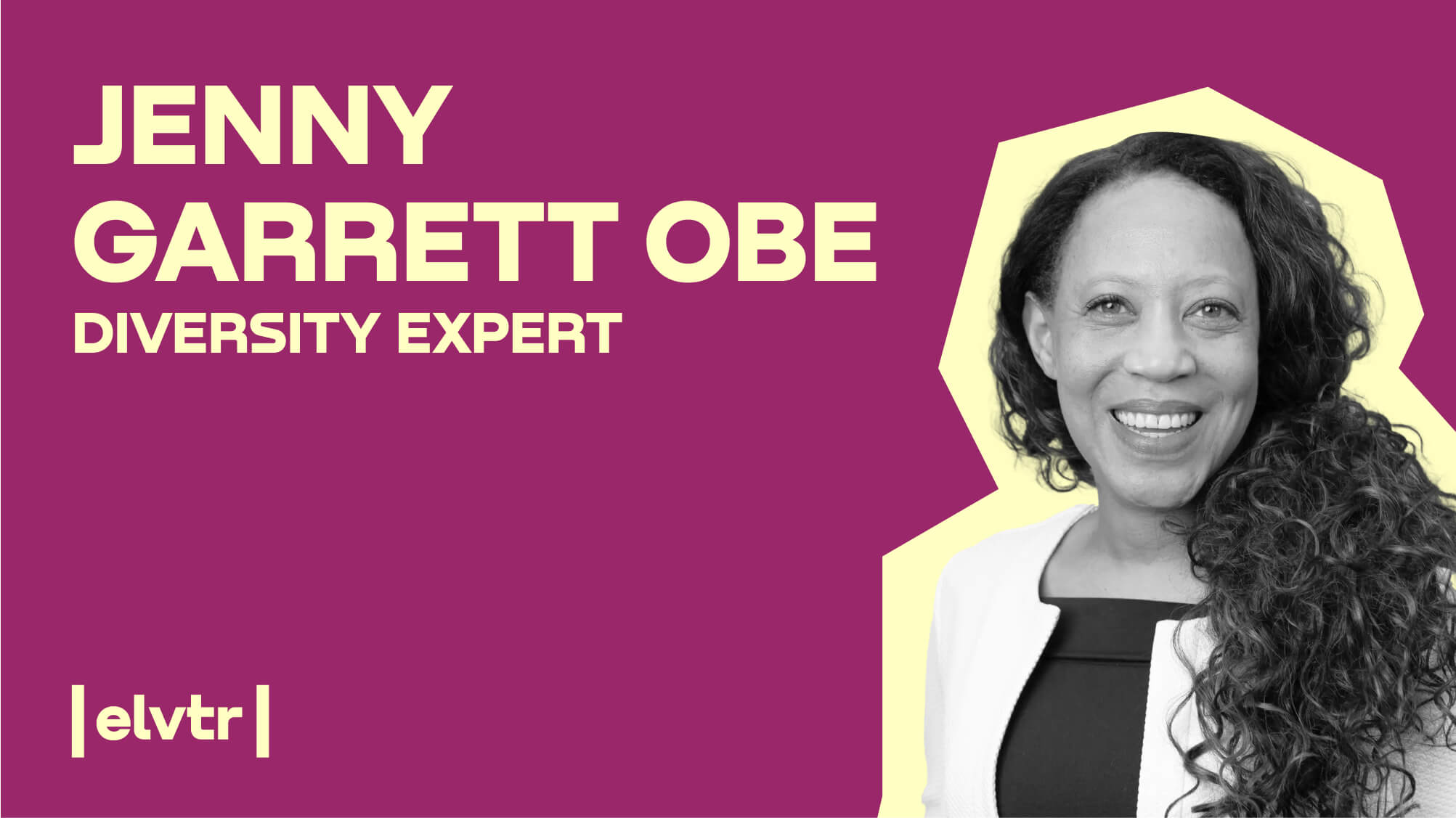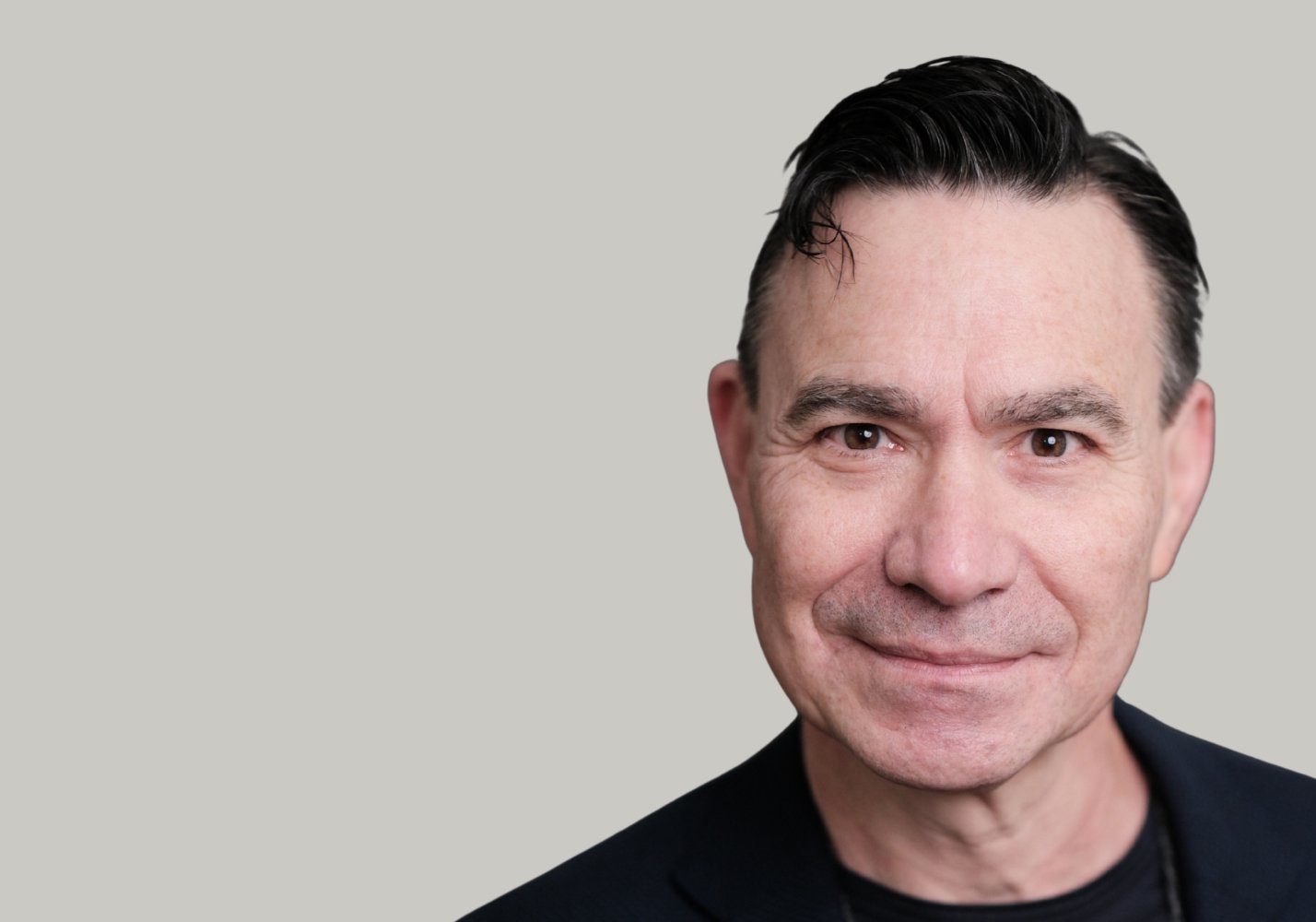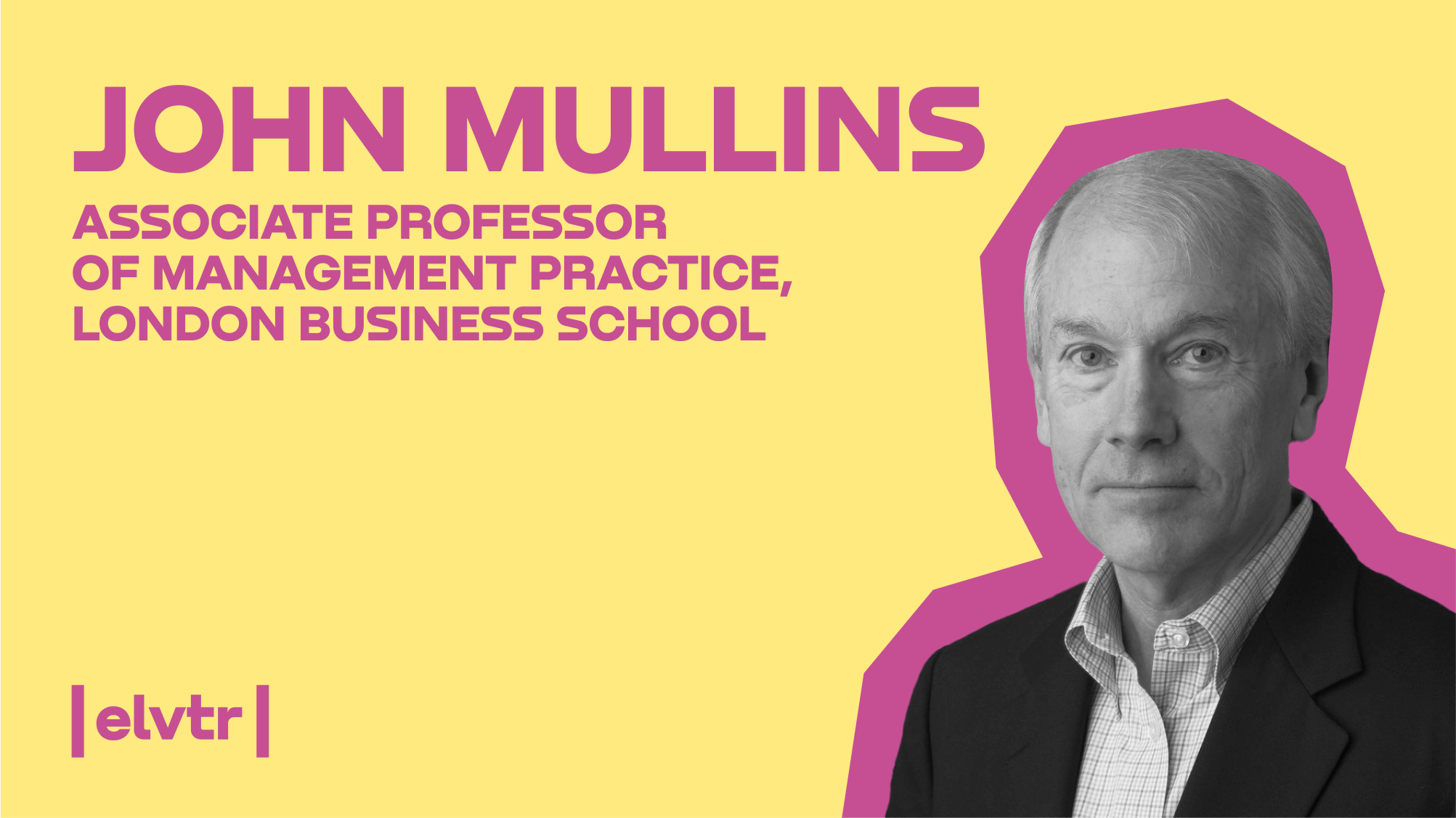- MAIN PAGE
- – elvtr magazine – JENNY GARRETT OBE: “DIVERSITY AT THE TOP BRINGS BETTER FINANCIAL PERFORMANCE”
JENNY GARRETT OBE: “DIVERSITY AT THE TOP BRINGS BETTER FINANCIAL PERFORMANCE”

As one of Britain’s leading diversity and inclusion experts, Jenny Garrett OBE does not mince her words when it comes to achieving equity in the workplace. An executive coach and leadership trainer who has worked with MasterCard, Lloyds Bank and Ernst & Young, she often talks about the problems people of BAME background, or “people of the global majority” as she calls them, face in the modern office.
Her latest book, Equality vs Equity, tackling issues of race in the workplace, deals with everything that hinders our way to achieving real equity in the workplace. Examples include microaggressions and the cultural and linguistic barriers that make discussions about race and gender in the corporate realm so difficult.
Ms Garrett sat with ELVTR for a chat on the crucial difference between equity and equality, online microaggressions, and the backlash against “woke” corporations.
What's the main difference between equity and equality and why is it important?
It’s the difference between treating everyone the same and giving people what they need. Managers often want to treat everyone the same, so they won't be accused of being unfair. But equality of opportunities doesn't result in an equality of outcomes, because not everyone is starting from the same place.
As a manager, you need to offer people what they need to achieve equity of outcomes. Someone might need a bit of sponsorship, a tap on the shoulder to go for a job opportunity, or more development than someone else because of their background.
So equity is about giving these opportunities to create equity of outcomes. If we give everyone the same thing, we end up with the same results and nothing changes.
Does more equity lead to better financial performance?
Absolutely. In the UK, the bigger number of people entering the workforce are women of colour. If we don't start creating equity of opportunities, then we're not going to recruit and retain the best talent, because they won't be attracted to our organisation.
Research tells us that when there's more diversity at the top, that leads to better financial outcomes..Companies in the top quartile for gender diversity are 15 per cent more likely to have financial returns above their respective national industry medians and companies in the top quartile for racial and ethnic diversity are 35 per cent more likely to have financial returns above their respective national industry medians and when they have low diversity they don’t just perform in an average way they lag behind. So, this is a competitive advantage.
Aren’t more diverse companies more innovative and creative too?
Indeed. But it's about diversity and inclusion. You can have a very diverse team who are forced to assimilate, to speak and behave in the same way.
So it's about bringing diversity into an organisation and creating an environment where they feel they can share their ideas. And also let you know if you have blind spots; in an advertising campaign for example, you might offend a whole audience.
Inclusion is critical for diversity to make a difference and help you tap into new markets and see things differently.
The modern workplace is very diverse. So why is there still racism, and other types of discrimination too?
Racism is continually shape-shifting, so it's not obvious. People don’t say offensive things in your face. Nowadays there's legislation against that.
So, it's easy to dismiss it, saying “we recruit everyone on merit”. Or “you didn't get that promotion because you just didn't make it,” rather than because the person who got the job looks like me, has the same hobbies, and therefore I feel comfortable with them. So, racism still exists because it continually changes form.
Many people have been brought up to not talk about race and racism. Some people say to me that when growing up, they were not allowed to talk about race. They were told it was a rude thing to do and now they are expected to talk about it. But the fact they're not talking about it allows us to dismiss people's experience when they do want to talk about it.
After the George Floyd killing, everyone has seen the inhumanity of how people of colour are being treated. That dehumanisation still exists, but in different ways.
Why is it still hard to talk about it?
One reason is that we don't have the language for it. People wonder if they should say “a person of colour”, “ethnic minority” or “Black”? And people trip over their words because they're not fluent in talking about race and ethnicity.
Also, people from the global majority are not always fluent when talking about race in a work environment. We're just not used to doing it. And we need to practise to get more comfortable at it.
Nobody wants to be accused of being racist. People don't want to make a mistake, so they tie themselves up in knots thinking: “What if I offend someone”? What if they accuse me of being racist? This is the worst thing that could happen to me. So they say nothing, and nothing changes.
As leaders, we have to be willing to say “I might make a mistake here, please be patient with me.”
You talk in the book about microaggressions in the workplace. Why are they a problem?
They do seem small, but they are like 1,000 paper cuts. One is not the end of the world, but if you get one cut after another, it becomes a huge sore.
During my corporate life, people always assumed when I was with a white colleague that I wasn't the manager. It was undermining to have to explain they got it wrong.
If someone has a name that is not anglicised, people immediately change that to a name that's familiar, thinking that's okay. A lot of people’s names have a strong meaning. That takes away someone's identity.
I was working with people in the medical profession recently. There were two South Asian women, say Pooja and Sangeeta, who didn’t look alike. And their colleagues were interchanging their names. Sometimes people were calling Pooja “Sangeeta” and vice versa. It undermined them because they started thinking: “Are you actually talking to me?” That's very undermining, especially when you've worked with people for many years, and they still continue to do that.
I find that people from the global majority are always a close second, often getting stuck in an organisation where they see their colleagues surpass them. They're working hard but they are not recognised.
What can business leaders do about that?
It's difficult to step into other people's shoes. What managers need to do is understand the experience of their colleagues. At the moment, they're blind to it, like it's not happening.
Often leaders think that everything's great. And there are people who are having a really bad experience. It's about seeing that truth and understanding that you want it to be different for them. You need to step into their shoes, be empathetic, and do something about it. I call that “using your power with humility.” Use your power to give them a different experience.
The thing about diversity and inclusion is that often we think this belongs to the diversity and inclusion team, HR, or just the people from the global majority.
It takes all of us to come together and embed this into the fabric of organisations. Every single person has to try to make organisations more inclusive.
It takes all of us to step up and notice someone not being able to speak in a meeting. How can I create space for them? I've noticed this person is not great at presentations. Maybe they don't have much experience. How can I help them to be better?
A big part of that equation is HR, maybe technology as well in the future. How can they tackle their inherent biases?
Research is telling us that the technology has an in-built bias. AI is not objective, because human beings are programming it.
Regarding HR, they have to influence the organisation to have more inclusive practices. What are the necessary processes to safeguard people who are the most marginalised in our organisation?
Regarding recruitment, can I advertise in different places and networks to get different applicants? What are the requirements for the role and are they all necessary? Do candidates need a degree? Or can we just look at skills? Can we train internally? Do we expect people to speak and dress in a certain way? Is that reflective of our client base?
Do we have diverse HR panels? Do we give all people on the panel the same power? And can we look out for our code for bias like “I'm not sure if they're the right cultural fit”? That says that our organisation isn't inclusive, and that we expect people to assimilate immediately.
Another kind of discrimination is gender equality. Does it intersect with race and how can HR professionals deal with this issue?
It is an issue in the workplace in the UK. Research shows we've made good strides. A recent FTSE report found that we have 40% of women in some boardrooms. So, progress has been made, but it is on shaky ground.
Women often make it into the boardroom and then find it a non-inclusive environment. They stay for as long as they can and then leave, so the pipeline of female leaders hasn't been developed. There's a gaping hole that takes a long time to fill and so you're just starting all over again. And if the environment on the Board doesn't change, you end up with this cycle of one woman leaving after another.
We have to make sure that people are not just recruiting women to tick a box but think about what women add to the boardroom. And you need at least three women in the room for them to have a voice.
This is a cultural clash between different generations at the moment. Is that something that business leaders should be worried about?
We have to think about how to make intergenerational workplaces work. There are young people coming in who want to be in office. They want to learn from others. Some of their colleagues who went through COVID might have a family and would rather not come into the office. So those young people don't benefit from all of that knowledge transfer and the social aspects of work.
HR needs to be thinking about how they support people at every stage and how we don't discriminate against the older population, as the retirement age is increasing. So how do you make the workplace inclusive for older employees? How do you make sure that young people get the knowledge and experience they need?
The research tells us that young people want a work-life-balance to pursue opportunities outside work. They are not necessarily into the corporate grind, unlike older generations.
When many different people work remotely, how do you deal with online microaggressions?
I have heard from people from the global majority that during the pandemic a benefit to keeping their camera off was they didn't experience discrimination: people looking at them and making assumptions about their capabilities.
That's not necessarily a good thing, because it feels like you're hiding the problem. The bias that exists because of remote working is a proximity bias. Those we spend more time with end up being front of mind and considered for big opportunities and stretch projects.
Managers need to think, who have I given opportunities to recently? Who am I assuming won't be interested in this job because they work from home? Am I assuming that they're not ambitious or productive anymore because they are working remotely? What are my biases?
Organisations could advertise every role as flexible or open to negotiation. And when they get the right candidate, ask how they want to work, perhaps through a condensed working week or job share.
What do you think about the backlash against “woke” corporations?
In my book, I describe the seesaw analogy where someone being heavier and holding the power and someone else being up because they are lighter. What we're trying to do is balance that seesaw with equity.
People who previously had power now might not have as much. They have to let go of power and opportunities that other groups might not have. That might feel like something's being taken away.
This resistance to what people call “wokeness” is resistance to change. Because it feels like something is being taken away from a proportion of the population. So it's about taking those people with you. It's important to engage in conversation with people who say this is “woke”. It's important to get to the root of what is going on for them, what they think they're going to lose out on, and help them be part of the solution.
When I talk to people about being a mentor, about leading with humility, I mention my own sponsors who have often been white men. They start to realise they have a place in the change. It's when people feel displaced that they complain about “wokeness”. They are saying: “where's my place now”? You're taking away from me, so I will accuse you of being “woke” to dismiss what's happening, rather than change. So let’s give people a role and listen both ways.
*ELVTR is disrupting education by putting proven industry leaders in a virtual classroom with eager rising stars. ELVTR courses offer 100% instructor driven content designed to give you practical knowledge within a convenient time frame. Choose the right course for you!



